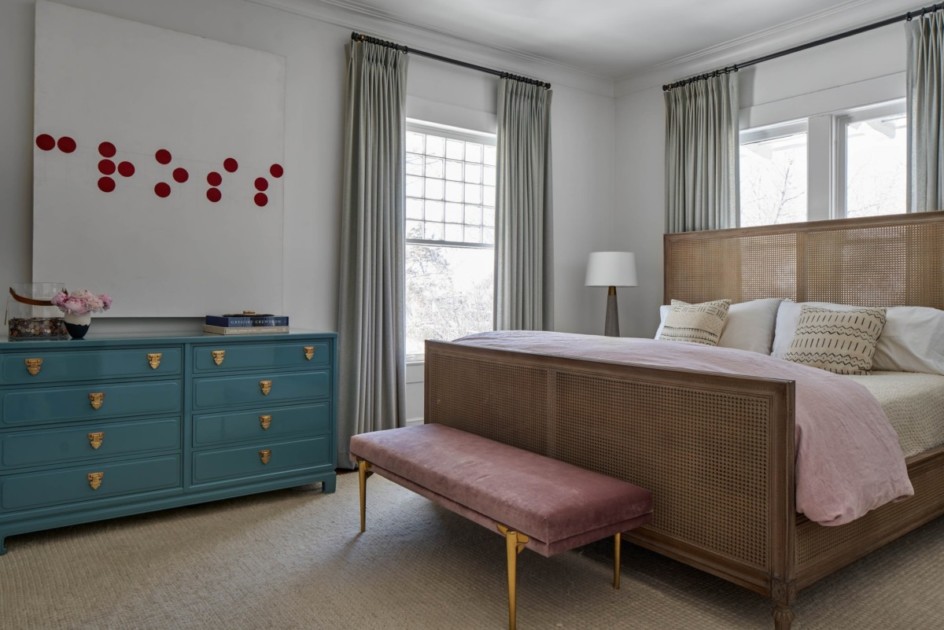House hunters can take advantage of new search filters and view more data on climate risk, school ratings, and neighborhood amenities
Over the past several months, we’ve added new data and search filters to the Redfin app and website to help you find the best home for your family. These features will give you a better idea of what it’s like to live in a neighborhood and narrow your search to homes that meet your needs and budget.
Introducing Property-Level Data for Fire, Heat, Drought, and Storm Risk
Our own research tells us that three-quarters of Americans worry about natural disasters when buying or selling a home, and that homeowners are twice as likely as renters to have researched climate issues before moving.
In 2021, we added property-level flood risk data from FloodFactor for over 94 million homes on Redfin.com. We also added regional-level data from ClimateCheck to help consumers understand the risk of fire, heat, drought, and storm for every neighborhood on our website in the contiguous U.S.
ClimateCheck’s fire, heat, drought, and storm risk data is now available at the property-level for nearly every home on Redfin.com. This will help homeowners understand the risk of these threats to their home over a 30-year period—the lifespan of a typical mortgage.
New Filters to Find Homes That Suit Your Needs & Fit Your Budget
Over the past nine months, we’ve introduced more than a dozen new search filters to narrow your home search. These filters help you identify homes that meet your needs, whether it be walkability, air conditioning, FHA/VA loans, a primary bedroom on the first floor, or many other amenities. You can use our new filters to find listings that include or exclude:
- Accepted financing of FHA and/or VA loans
- Air-conditioning
- Co-ops
- Elevator
- Fireplace
- Garage spot
- Guest house
- Homes in 55+ communities
- Land leases
- Manufactured homes
- Pets allowed
- Pool
- Price per square foot
- Primary bedroom on main floor
- Property tax payments
- RV parking
- Walk Score, Bike Score, and Transit Score
- Washer/dryer hookup
More Information Explaining School Ratings
Earlier this month, we changed the way we display GreatSchools ratings on Redfin.com to provide a fuller picture of school quality. We know homebuyers care about schools—the schools section is one of the most popular items on a home’s details page. The changes we made this month provide more context behind GreatSchools’ sub-ratings, which contribute to a school’s overall rating.
GreatSchools’ sub-ratings reflect important factors in how students experience school, including how well schools serve students from different racial, ethnic, and socioeconomic backgrounds, how much students are improving within a school year, performance on state tests, and how well schools prepare students for college. Our goal in making these changes is to give parents a clearer lens of how schools serve all children.
| Old | New |
 |
 |
Details About the Grocery Stores, Restaurants, and Other Amenities Near a Home
In a recent survey of Redfin.com users, nearly 1 in 4 respondents told us that information about a neighborhood’s amenities is important to them. And, with 30% of homebuyers looking to relocate to another metro, getting a sense of a new neighborhood can be tough—especially if it’s across the country.
That’s why beginning this month, all home details pages on Redfin.com include information from Foursquare about the grocery stores, shopping, restaurants, parks, arts and entertainment, emergency services, and other amenities in the area.
Let Us Know What You Think!
We hope these new features are helpful and bring you closer to finding your dream home. If you have ideas for other ways we can make your search better, please get in touch! We’d love to hear from you.
In the commercial real estate realm, regardless of genre, industrial, office, or retail space is measured by the square foot. (iStockphoto)
As Captain Kirk proclaimed, “Space, the final frontier!” Today, my mission is to explore a different kind of space – that which folks use to make, store and ship things.
In the commercial real estate realm, regardless of genre, industrial, office, or retail space is measured by the square foot. Simply, if the floor-plan of a building is 100 feet long by 100 feet wide, the square footage is the product — 10,000 square feet. This measurement is then used to compute rental amounts, sales prices and percentages of operating expenses.
Rental amounts: In California, our rental or lease rates are quoted in monthly terms, for example, $1 per square foot. Places outside California may annualize the rates to $12 per square foot. So, using our 10,000-square-foot building and the lease rate of $1 per square foot, the quoted monthly rental amount is $10,000 per month. Easy.
Sales price: A parcel’s sale price takes into account one of a couple of metrics. First, if a lease of $10,000 monthly is in place and an owner decides to sell, the annualized rent forms a return to an investor, say 4%. Therefore $10,000 over the year amounts to $120,000. That $120,000 divided by our return of 4% yields a price of $3 million. On a square foot basis: $300 ($3 million for a 10,000 square foot building.
Should our example be vacant and our potential buyer desiring a company address, the resulting value will be the comparable market per square foot number multiplied by the square footage. Lately, we’ve not seen a great variance between what an investor will pay vs an occupant. The “occupant premium,” a scenario in which someone housing a business would pay more, is a galaxy away.
Operating expenses: Leases have an additional component worth mentioning: the way in which operating expenses are reimbursed. You see, in addition to rent, other costs abound such as property taxes, building insurance, roof maintenance, parking lot sweeping, elevator repairs, mowing the lawn and trimming the trees.
If you’re under a gross lease, these expenses are baked into the monthly check you write. With a net lease, you pay as you go. As you can gather, regardless of the form, the expenses are yours. Square footage is based on the percentage of the premises you occupy.
Say your 10,000 square foot home is standalone. Yep, all those operating expenses are yours. Conversely, if the 10,000-square-foot space is a suite on the 10th floor of a 100,000-square-foot office tower, your portion would be 10%.
Uses of space: Generally, occupants – whether they lease or own – put people, machinery or products in their space.
When you visit your CPA this spring to gauge the amount of your refund, you’ll visit an office. Within the confines are people. A trip to your local mechanic’s shop will evidence lifts, tire rotation equipment and diagnostic machinery behind the front desk. Products abound in a T-Mobile store.
But wait, don’t all these different types of commercial space have people, you may wonder? Sure. But the way operations employ folks is the difference — computing your marginal tax rate, changing your oil, or convincing you to upgrade to an iPhone 13.
Next week, I’ll delve into the acute shortage of industrial space and some suggestions on creating new space. So, stay tuned. Kirk, out!
Allen C. Buchanan, SIOR, is a principal with Lee & Associates Commercial Real Estate Services in Orange. He can be reached at abuchanan@lee-associates.com or 714.564.7104.
While first-time homebuyers and even seasoned homeowners might have heard of MLS, they may not be familiar with the role it plays throughout the home buying and selling process. Understanding how the MLS factors into the process can help you get the most out of your purchase or sale. In this article, we’ll be answering:
- What is MLS?
- How does the MLS work?
- What information is included and excluded from a listing?
- How can I access the MLS in my area?
- Why is the MLS is important?
These essentials will give you a deeper understanding of how the homebuying and selling process works. Let’s get started.

What is MLS?
MLS stands for multiple listing service. It is a database of homes for sale that is produced and maintained by real estate professionals to help their clients buy or sell property. Homes for sale on an MLS are called listings. The MLS listings typically include important property information, such as exterior and interior details, asking price, taxes, and other costs.
The MLS was first created in the United States in the late 1800s. Members of the Board of Realtors in a given area would come together on certain days and share information about what properties were for sale. During these meetings, realtors exchanged information about properties and carried out the purchase of properties on behalf of buyers they represented.
Today, a local MLS provides publicly available information about listings to interested buyers. However, some information is kept private. This includes anything that could expose the seller or the property to certain risks. For example, contact information about the seller is not publicly listed to protect their privacy, and details about when the home is vacant for showings is never listed to prevent break-ins. To access those details, buyers need to work with a licensed real estate agent.
MLS systems range in size, sometimes covering the local municipality— such as the Chicago MLS Midwest Real Estate Data (MRED). In rural areas, like Portland, ME, one regional MLS can cover several counties. Potential buyers can also access MLS information via websites like Redfin, where listings can be viewed before buyers decide on their agent.
How does the multiple listing service work?
The multiple listing service works to make the process of buying and selling property easier. Each MLS works a little differently, but here’s how it works in most cases: When a homeowner is ready to list a home for sale, they get in touch with a broker or agent and grant them access to create a listing. The agent will gather the necessary details to complete the listing and will likely arrange for photography to be captured – all with the goal of making the home and listing as attractive as possible for buyers. It’s important to note that home sellers can’t post their home directly to the MLS, because posting access is reserved for licensed agents and brokers who pay for membership
Once the listing is live, it can be shared with potential buyers. Buyer’s agents will assist in getting the listing information out to their clients, so long as the property fits their client’s needs. The buyers then indicate which properties they want to view in person and their real estate agent can then schedule a showing. And from there, if the buyer likes the home, they can enter the negotiation process.
What information does an MLS include for a typical listing?
The MLS contains information and details to help understand the current value of the home, its carrying costs, and its potential value. In other words, information that aids in real estate investing. Details you should pay attention to include:
- Photographs and videos of the property
- House style, such as Tudor or Victorian house styles
- Lot dimensions and square footage
- Number of bedrooms and bathrooms
- Detailed descriptions of the property room by room, including flooring
- Details of the exterior features, such as type of siding and roofing
- Asking price, taxes, and, if any, homeowners association (HOA) dues
- Days on market and original listing price if it has changed
- County and township, plus subdivision information if applicable
- Year built or at least a notification if the home was built before lead paint was banned (1978)
- School district information— elementary, middle/junior high, and high school
- Utility information, such as how you get your water (well vs. city)
- “Green” features, if applicable, including solar capabilities and green building rating score
- Seller’s disclosures, if any
When viewing condo listings, you’ll also find information about the type of management for the HOA. A condo listing should also include a pet policy, storage availability, parking availability, and whether or not the parking spot is deeded. Finally, the unit’s exposure— north, south, east, or west— should be noted, which will indicate the level of natural light you can expect.
Often the listing should also mention any tax advantages the previous owner has received, but sometimes this information is left out. For example, in most states, senior citizens get a reduced property tax rate. If the listing doesn’t note this discount, you could be surprised by a high tax increase in the second year of ownership. Your accountant or financial advisor should be able to assist you in understanding the tax implications of the property.

Can I look for homes on the MLS?
To look for homes on the MLS, you will need help from your real estate agent or broker. MLS access is limited to real estate brokers and agents who pay an annual fee, So when you work with an agent or broker, they will give you access to a portion of the MLS that matches your search criteria. Typically, this is done either through email, a special log-in, or both.
If you have a real estate license and pay a small fee, you may be able to access the MLS on your own— it depends on the MLS in your area. Some MLS databases are made accessible to anyone with a license, while others require a license and that you are active in the real estate market in your area. In other words, you are actively assisting buyers and sellers with their real estate transactions.
Luckily, you can get up-to-date home listings on Redfin.com. Because Redfin is a brokerage website, it is able to be updated directly from the MLS. That means its listings are updated soon after a listing broker initially lists the property or makes any updates.*
How many MLSs are there and who updates them?
The Real Estate Standards Organization (RESO) sets standards for and certifies multiple listing services. According to RESO, there are 580 certified MLSs operating in the United States, with dozens more in the certification process. You can look up an MLS’s certification report on the RESO website. More in-depth reports are set to be released and searchable by the end of 2021.
The MLS of a specific area is managed by a group of real estate professionals, agents, and brokers. For example, the Colorado Springs, CO multiple listing service is run by Pikes Peak REALTOR® Services. Some of the time, the group managing an MLS has some connection with the National Association of Realtors (NAR), but not always.
The listing agent updates individual property listings. Exactly how often the MLS updates differs based on the MLS and how it integrates its data. If the listing agent has made any changes to the listing, the MLS will pick up those changes and the new information will be shown.
Are all homes that are for sale listed on the MLS?
No, not all homes available for sale are listed on an MLS. There are three instances where a home may be for sale but is unlisted. The first instance is homes for sale by owner (FSBO).
FSBO properties are not allowed on many MLSs. This happens when the MLS only accepts listings from licensed agents and brokers. In some areas, FSBO sellers can list their property for a flat fee. At Redfin, we source the FSBO listings from Fizber.com and FSBO.com.
The second instance where a property might be for sale but remain unlisted is that the property is a pocket listing. Pocket listings are homes for sale where the selling agent only shows the home to a select group of buyers. In some markets, as many as twenty percent of properties for sale are pocket listings.
The third instance where a home may not be listed on the MLS is new construction homes. Sometimes builders opt out of working with a real estate agent to sell their development. You’ll see this happen more often when the market is hot and builders don’t necessarily need to bring buyers in.
The National Association of Realtors banned this practice in 2019. But the ban wasn’t enforced, and pocket listings have been on the rise ever since. The reason these listings can be problematic is that it prevents certain buyers from participating in the real estate market, leading to unfair housing practices.

Why the MLS is important for everyone
While the MLS is created for and maintained by real estate professionals, it benefits many aspects of the real estate market and the people with stakes in the market. The MLS brings transparency to the real estate system— everyone can see what’s selling at what price— which is crucial to creating and maintaining a fair housing market.
How it benefits agents
An MLS is a great real estate agent resource and has many business benefits. The MLS makes it easy to share listings with buyers, usually by setting them up with a portal to view their matches. When the buyer finds something they like, they can easily communicate their interest with the agent and get set up with a viewing.
Agents can also promote the homes they are representing for sale with thousands of potential buyers. They can easily tweak the listing details to make the property more appealing or update the listing if anything significant has changed.
How it benefits sellers
Home sellers also benefit from the MLS. The service makes it very easy to share their listing with potential buyers— exposure they wouldn’t typically get if selling on their own. During the comparative market analysis (aka “comps” process) the seller will get information about what other properties are selling for and the features they offer. This is how the initial asking price is determined.
But, a seller can use this information to their advantage in other ways. For example, if their home has a competitive disadvantage the seller may be able to address that disadvantage before putting the home on the market. Sellers should examine the property details of similar homes that are selling at the higher end of the spectrum for ideas for home improvements. Often a few small projects can result in less time on the market and a higher sales price.
How it benefits buyers
Through the help of an agent, a buyer can also benefit from the MLS. As they’re in the process of buying a home, a buyer will have more options to choose from that meet their criteria and the MLS will provide more detailed information about the listing such as size, features, style, neighborhood, and more. This makes sorting through the potential hits much easier for the agent, which in turn saves the buyer time.
* 85% of new listings in MLS feeds received by Redfin will post within 5 minutes.
Suitably nicknamed “Music City,” Nashville, TN is known as the capital of country music, home to the Country Music Hall of Fame and Museum, and famous concert venues like the Ryman Auditorium. With all that this Southern city has to offer, it’s no wonder that nearly 690K residents live in Nashville and many out-of-towners are moving in.
If you’re looking to rent an apartment or buy a home in Nashville, you may be wondering just how much it’s going to cost. Nashville’s median home sale price is $412K and the average rent for a 2 bedroom apartment in Nashville is $2,745, which may or may not fit into your budget. As you figure out how much house you can afford, check out the 10 best affordable Nashville suburbs within driving distance of the city. That way you can make the right decision for your homebuying needs.

#1: La Vergne, TN
Median home price: $284,000
Driving distance from Nashville: 30 minutes
La Vergne, TN homes for sale
La Vergne, TN apartments for rent
With a median home sale price of $284,000, almost $130K less than Nashville, La Vergne lands the number one spot on our list of best affordable Nashville suburbs. About 38,700 people live in this Nashville suburb, so plan a picnic at Veterans Memorial Park, a camping trip to Hurricane Creek, or explore the Poole Knobs Recreation Areas.
#2: Ashland City, TN (tie)
Median home price: $287,000
Driving distance from Nashville: 30 minutes
Ashland, TN homes for sale
Ashland, TN apartments for rent
Only slightly more expensive than La Vergne, Ashland City takes the second spot on our list with a median home sale price of $287K. About 30 minutes away from downtown Nashville, Ashland City has just over 5,000 residents, a perfect place for those looking to escape the hustle and bustle of everyday city life. Living in Ashland City, make sure to plan a kayaking trip along the Cumberland River and check out Riverbluff Park.
#2: White Bluff, TN (tie)
Median home price: $287,000
Driving distance from Nashville: 45 minutes
White Bluff, TN homes for sale
White Bluff, TN apartments for rent
Tying with Ashland City for the second spot and just west of Nashville is the suburb of White Bluff. Slightly further from Nashville than Ashland City, you’ll be at the Grand Ole Opry ready to watch a show in about 45 minutes. After moving to this suburb of 3,862 people, you can spend time learning about its history, enjoy some great BBQ and explore the Montgomery Bell Mountain Bike Trail
#4: Springfield, TN
Median home price: $290,000
Driving distance from Nashville: 45 minutes
Springfield, TN homes for sale
Springfield, TN apartments for rent
Springfield comes in as the fourth most affordable Nashville suburb, only slightly more expensive than the top three spots. With a population of 18,782, Springfield will give you a small town feel while being able to explore Nashville on the weekends. If you find yourself moving to Springfield, make sure to walk along the Springfield Greenway trail.

#5: Smyrna, TN
Median home price: $324,000
Driving distance from Nashville: 35 minutes
Smyrna, TN homes for sale
Smyrna, TN apartments for rent
Drive 35 minutes southeast of Nashville and you’ll find yourself in the suburb of Smyrna. Home to 55,663 residents, this affordable town can be a great choice for homeowners looking to remain close to Nashville without paying the premium for city life. In Smyrna, make sure to check out the Smyrna Outdoor Adventure Center for a swim during the summer and the Smyrna History Museum to learn about the city’s history.
#6: Goodlettsville, TN
Median home price: $338,000
Driving distance from Nashville: 20 minutes
Goodlettsville, TN homes for sale
Goodlettsville, TN apartments for rent
A recognizable suburb of Nashville is Goodlettsville, where the home prices are almost $75K less than Nashville. With roughly 17,800 people calling Goodlettsville home, consider adding this affordable suburb to your list of places to consider. With Moss-Wright Park and the Historic Mansker’s Station, you’ll have easy access to what makes Goodlettsville unique.
#7: White House, TN
Median home price: $361,000
Driving distance from Nashville: 30 minutes
White House, TN homes for sale
White House, TN apartments for rent
Claiming the seventh spot on our list of affordable Nashville suburbs is White House, which is roughly 30 minutes away from the heart of Nashville. With a population of 12,982, buying a home in White House will give you a small town feel with plenty of nature surrounding the town. After moving to this Nashville suburb, make sure to visit White House Public Library to pick up a new book or bike along the Veteran’s Memorial trailhead.

#8: Gallatin, TN
Median home price: $366,000
Driving distance from Nashville: 40 minutes
Gallatin, TN homes for sale
Gallatin, TN apartments for rent
Gallatin, Tennessee is a great suburb to consider moving to with access to downtown Nashville in just about 40 minutes – as long as you don’t hit traffic. About 44,500 people live in this affordable suburban town and you’ll be surrounded by areas to explore in your free time. Fun activities to do in Gallatin include exploring Bledsoe Creek State Park and Nat Caldwell Park or taking a tour of Rose Mont, a Greek Revival style home.
#9: Lebanon, TN
Median home price: $370,000
Driving distance from Nashville: 35 minutes
Lebanon, TN homes for sale
Lebanon, TN apartments for rent
If you’ve lived in Nashville for a while, chances are you know of someone who has moved to Lebanon. About 38,500 residents call this affordable city home, so you’ll have a fraction of Nashville’s population while being a 35 minute drive away from Nashville and its attractions. Make sure to explore Don Fox Community Park and visit the Cumberland University campus once you move to Lebanon.
#10: Greenbrier, TN
Median home price: $427,000
Driving distance from Nashville: 30 minutes
Greenbrier, TN homes for sale
Greenbrier, TN apartments for rent
Last but not least on our list of affordable Nashville suburbs, is Greenbrier. Without traffic, you’ll find yourself in Nashville in roughly 30 minutes. This suburb has a population of 6,898, making it much less than Nashville’s population. While home prices are more expensive than Nashville, we’ve kept Greenbrier on our list as you can find sprawling homes on multiple acres. Home to Greenbrier Lake and the Oak Hills Golf Course, you’ll have plenty of outdoor activities to do during your free time.
Methodology:
Affordability based on whether a suburb is less than the median sale price of Nashville and under a 45 minute drive from downtown Nashville. Median home sale price data from the Redfin Data Center during December 2021. Average rental data from Rent.com May 2022. Population data sourced from United States Census Bureau.




